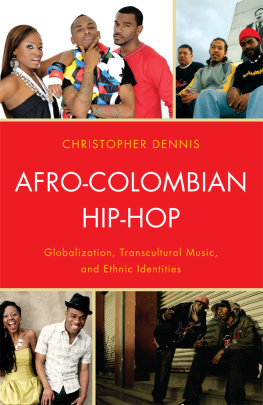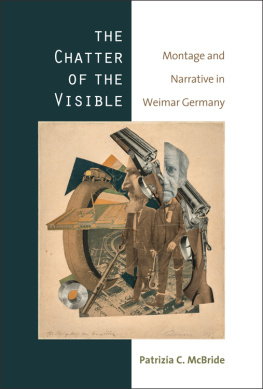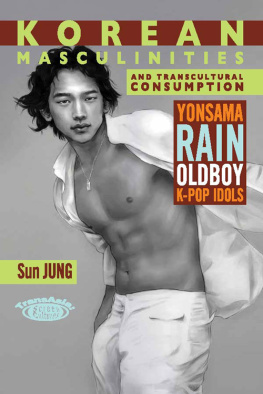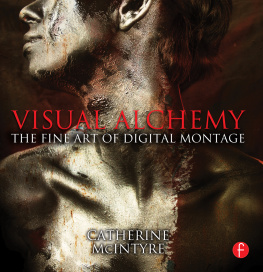Published in 2013 by
Berghahn Books
www.berghahnbooks.com
2013 Christian Suhr and Rane Willerslev
All rights reserved. Except for the quotation of short passages for the purposes of criticism and review, no part of this book may be reproduced in any form or by any means, electronic or mechanical, including photocopying, recording, or any information storage and retrieval system now known or to be invented, without written permission of the publisher.
Library of Congress Cataloging-in-Publication Data
Transcultural montage / edited by Christian Suhr, Rane Willerslev.
pages cm.
Includes bibliographical references.
ISBN 978-0-85745-964-0 (pbk. : alk. paper) ISBN 978-0-85745-965-7 (retail ebook)
1. EthnologyPhilosophy. 2. EthnologyAuthorship. 3. Motion pictures in ethnology. I. Suhr, Christian.
GN345.T73 2013
306dc23
2013005541
British Library Cataloguing in Publication Data
A catalogue record for this book is available from the British Library
Printed in the United States on acid-free paper
ISBN: 978-0-85745-964-0 paperback ISBN: 978-0-85745-965-7 retail ebook
Acknowledgments
Our warmest thanks go to Jakob Hgel, Peter Crawford, Ton Otto, Martin Holbraad, David MacDougall, Jesper Laursen, and all the students and employees from the Ethnographic Section at the Moesgaard Museum who made this book possible. A special thank you to our Berghahn editor, Ann Przyzycki DeVita, who has worked with us on this book with great stamina and professionalism. Furthermore we wish to thank Mike Dempsey, Elizabeth Berg, Melissa Spinelli, Patricia Kubala, Bruno Reinhardt, and the three anonymous reviewers from Berghahn for all their careful revisions and suggestions. Finally we thank these institutions and funds for their generous support of this book: Aarhus University Research Foundation, the Faculty of Arts at Aarhus University, the Danish Research School of Anthropology and Ethnography, the Ethnographic Collections at Moesgaard Museum, the Danish Film Institute, and Aarhus Filmby.
INTRODUCTION
Montage as an Amplifier of Invisibility
Rane Willerslev and Christian Suhr
Montage, in its broadest sense, simply implies the joining together of different elements in a variety of combinations, repetitions, and overlaps. It is customarily associated with cinematic editing, but the basic principles of montage play a crucial role in a broad range of artistic, cultural, and academic practices. This volume presents experiments with ethnographic prose, film studies, photo essays, and theoretical arguments by anthropologists, filmmakers, photographers, and exhibition designersall of whom employ montage and theorize its significance in their works.
But why the need for a book on montage? Cinematic montage has been around for more than a hundred years, experiencing its heydays just around the First World War. Today, having passed into the new millennium, montage may easily be regarded as an obsolete principle, with little capacity to evoke or provoke issues of a social and existential nature. In fact, Theodor Adorno declared the death of montage already back in the 1960s: The principle of montage was supposed to shock people into realizing just how dubious any organic unity was. Now that the shock has lost its punch, the products of montage revert to being indifferent stuff.... The method of montage has therefore been neutralized (1984: 223).
Has the scholarly and artistic vitality of this audacious technique been entirely exhausted? The message of this book is clear: For those ready to look, think, and make new connections, montage retains the power to suggest fresh ways of perceiving relations between artistic expression, scholarly imagination, and social life. Its techniques for troubling commonsense notions of reality are as powerful as ever (Phillips 1992: 35).
One key contribution of montage to social theory is its capacity to generate analytics and anti-analytics while maintaining a space for the invisible. As the contributors to this volume testify, strange things happen when two elements are brought together in montage. Never is the result simply the sum of the single components. Something extra, a surplus or an excess, is always produced. This extra speaks back to the elements and produces a state of generative instability, where each part transforms and takes on new shapes within the wider constellation. We see in the juxtaposition of montage components the opening of a gap or fissure, through which the invisible emerges.
Within realist schools of anthropological writing, exhibition making, and filmmaking, montage has traditionally been regarded with a good deal of suspicion as a disruptive principle that potentially could pollute the direct correspondence between scholarly representations and the social world, thereby obstructing our possibilities for understanding human life across the boundaries of culture. However, the assertion of this volume is the opposite: the destabilization and rupture of our common-sense perception is the very condition for transcending cultural boundaries. Montage, we venture to propose, is a means to this end.
The book is divided into four sections, each presenting a variety of current experiments with: Montage as an Analytic; Montage in Writing; Montage in Film; and Montage in Museum Exhibitions. Each of the four parts begins with an outline that briefly introduces the theoretical, analytic, and aesthetic questions raised by the contributions. At the end of the book, George Marcus, whose seminal article on The Cinematic Metaphor of Montage (1994) sets the antecedent for this book, provides an afterword on the traffic in montage over the past twenty years. This introduction discusses in general terms how the capacity of montage for transcending the boundaries of culture can be used to push social theory beyond the visible and into the uncharted regions of the invisible. First, we consider the role of the invisible in social theory and how classic filmmakers such as D. W. Griffith, Sergei Eisenstein, and Dziga Vertov used montage to address it.
The Visible and the Invisible
Clearly, the invisible, whether understood in terms of vision or in the form of hidden ideological, economic, psychological, or magico-religious structures, is central to human life. It comes as no surprise, therefore, that the invisible, with its various problems, mysteries, and implications, has become both a paradigm and an obsession for much modern intellectual life. This is evident in the Marxist claim that the true significance of social processes often goes on behind the backs of individual agents (Eagleton 1990: 198). In psychoanalysis, it has likewise been argued that the real meanings of our actions are quite imperceptible to the watchful mind, but are to be found underground in the unconscious. In anthropology, structuralism further decentered the empirical subject by arguing that myths think themselves through people, rather than vice versa.








